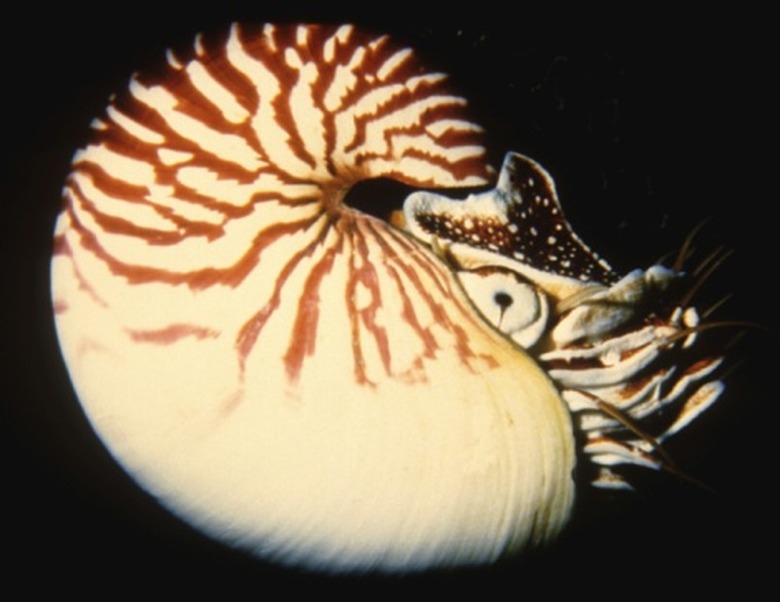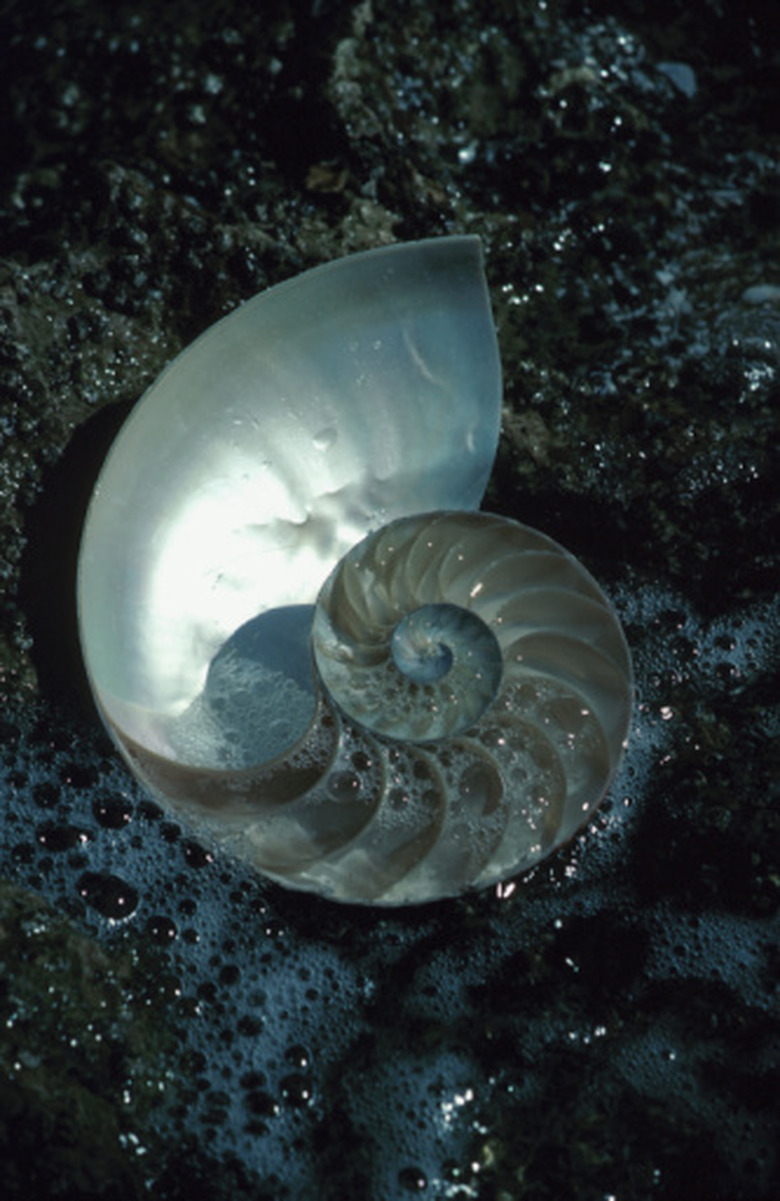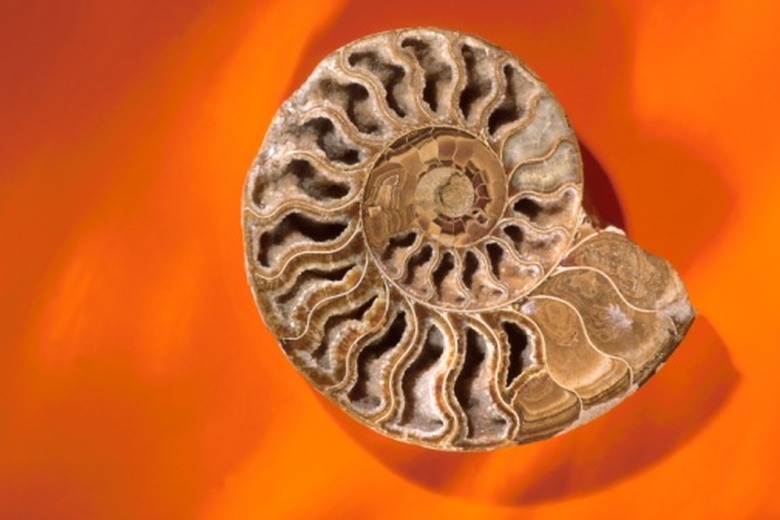The Differences Between Nautilus & Ammonite
The nautilus and the ammonite are similar organisms. Both are aquatic molluscs with spiral shells. Ammonites, however, have been extinct since the K-T event that killed the dinosaurs 65 million years ago while the nautilus still roams the seas. There are numerous other differences between the two creatures, most of which are minor.
Basics
Basics
The nautilus is a living cephalopod (like ocotopi, cuttlefish, squid) mollusc with a spiral shell and large, distinct eyes. It uses jet propulsion to move through the water, taking in liquid and then expelling it through a funnel for locomotion. Ammonites were the predecessors to living nautiluses and had a nearly identical structure with minor differences that distinguish the two families.
Siphuncle
Siphuncle
The siphuncle is a tube that runs through the spiraled shell of ammonites and nautiluses. This tube is used for expelling water and gases as the shell grows or to decrease the density of the animals' interior so that it floats upward. The siphuncle ran along the outer edge of the shell in ammonites, while it runs straight through the center of the shell in modern nautiluses.
Sutures
Sutures
The shells of ammonites and nautiluses are divided into various chambers that can fill with gas or water depending on whether the animal needs to sink or float. Ammonites had 26 chambers while modern nautiluses have 30. These chambers are separated by walls known as sutures. Sutures are uniformly curved in the modern nautilus, however they tend to undulate in the extinct ammonites. The undulation of the sutures creates a "ribbed" look to the ammonite's shell that is absent in nautiluses, which have smooth shells.
Defense
Defense
One other minor difference between nautiluses and ammonites is their defensive behaviors. The ammonites had the ability to suck their bodies into their shells for protection. A flap called the aptychus would close at the head of their shells to protect the animals. Nautiluses cannot retract into their shells. They use a leathery hood atop their heads for protection. Modern nautiluses use dark colors atop their shells and light colors on the bottom for camouflage, but the colors of the ammonites are unknown since all that exist of them are fossils.
Cite This Article
MLA
Shields, Brenton. "The Differences Between Nautilus & Ammonite" sciencing.com, https://www.sciencing.com/differences-between-nautilus-ammonite-8687704/. 22 November 2019.
APA
Shields, Brenton. (2019, November 22). The Differences Between Nautilus & Ammonite. sciencing.com. Retrieved from https://www.sciencing.com/differences-between-nautilus-ammonite-8687704/
Chicago
Shields, Brenton. The Differences Between Nautilus & Ammonite last modified March 24, 2022. https://www.sciencing.com/differences-between-nautilus-ammonite-8687704/


